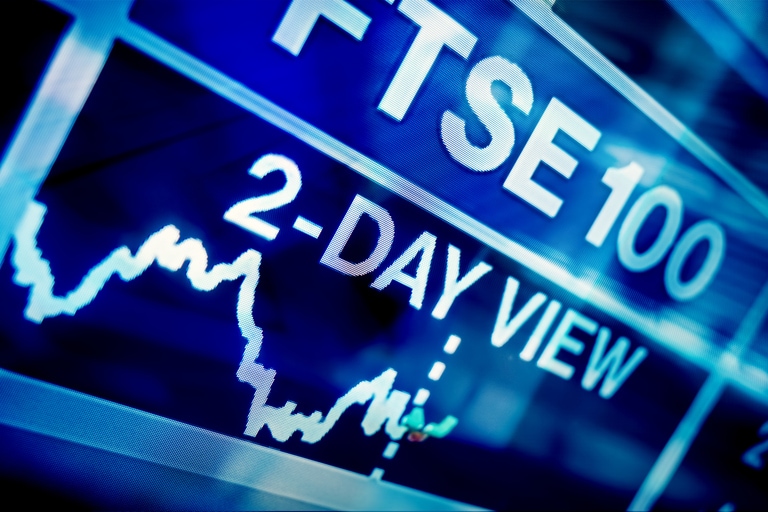European markets have struggled for direction this week, finishing yesterday modestly higher after two days of minor losses.
US markets on the other hand finished the day strongly higher, with the Nasdaq 100 leading the way higher on the belief, rightly or wrongly, that the US economy is heading for a soft landing whatever the Fed does next week.
Yesterday’s Q4 GDP numbers showed the US economy expanded by 2.9%, while weekly jobless claims fell again to 186k from 192k the week before.
If there are any concerns that the US economy is on the brink of a recession it’s certainly not being reflected in the economic data, which still looks solid, as we look towards next week's Federal Reserve rate meeting.
Today we get a look at the latest personal spending numbers for December, after seeing a sizeable slowdown in the November numbers to 0.1%, after a strong October showing of 0.9%.
If we get a similar weak reading today, and all the forecasts suggest we might, then that would suggest a rising caution amongst US consumers about how the economy is evolving as we head into 2023. We’ve already seen US banks setting aside hefty loan loss provisions in their most recent earnings numbers, a move which might suggest rising unease that consumers are becoming more frugal with their spending, or that a slowdown might result in credit losses.
Expectations are for December personal spending to decline by -0.1%, which seems somewhat conservative given that retail sales showed a decline of -1.1% a couple of weeks ago.
Whatever numbers we get today it seems almost certain that we will see the Federal Reserve raise rates by another 25bps next week, and judging by the rally in US stocks yesterday, the market has increasingly priced in that outcome instead of what might have been a 50bps move.
The big concern is what markets aren’t pricing, and while the Bank of Canada earlier this week signalled a pause in its rate hiking cycle, that doesn’t mean the Fed will follow a similar path, even though markets appear to be pricing exactly that sort of outcome.
While yesterday’s GDP numbers increasingly appear to support the prospect of a soft landing, the labour market data also suggests that the Fed has the headroom to continue to be much more aggressive.
Today’s PCE Core Deflator inflation data is expected to confirm another modest slowdown from 4.7% to 4.4%, and the lowest reading since October 2021. It would also support the case for a more modest 25bps next week, however as we get nearer to the end of the Fed’s rate hiking cycle there is some divergence with respect to what might come next.
Judging by the bond market reaction which saw yields move higher there may be a realisation that rates are likely to remain higher for longer, while the strong close for stocks might suggest the market believes rate cuts might not be too far away.
That seems doubtful if last night’s Tokyo CPI is any guide, after inflation there surged to a new 42 year high at 4.4%, well above expectations of 4%. This suggests that global inflation is likely to be stickier than markets are currently pricing.
We’ll soon see who is right when Fed chair Powell speaks next week, but if markets think a pause is coming, they could be in for a bit of a wake-up call.
EUR/USD – another fairly tight range yesterday with resistance at 1.0927 and the highs this week, as well as wider resistance at the 1.0950 area which is 50% retracement of the move from the 2021 highs to last year’s lows at 0.9536. A move through 1.0950 opens up a move towards 1.1110. Support remains back at the 1.0780 area.
GBP/USD – made another attempt to move towards the 1.2450 resistance area yesterday, before slipping back. We need to see a move through the 1.2450 area to target further gains towards 1.2600. A move below 1.2250 could see a move towards 1.2170.
EUR/GBP – the failure to make progress through the 0.8850 area has seen the euro slip back. Also have resistance at the previous highs at 0.8900. Still have support above the 50- and 100-day SMA which we saw last week at the 0.8720/30 area. Below 0.8720 targets 0.8680.
USD/JPY – needs to break through the 131.00 area to target a move back towards 132.60. While below the risk is for further declines towards the lows at 127.20. We have interim support at the 128.20 area initially.
CMC Markets erbjuder sin tjänst som ”execution only”. Detta material (antingen uttryckt eller inte) är endast för allmän information och tar inte hänsyn till dina personliga omständigheter eller mål. Ingenting i detta material är (eller bör anses vara) finansiella, investeringar eller andra råd som beroende bör läggas på. Inget yttrande i materialet utgör en rekommendation från CMC Markets eller författaren om en viss investering, säkerhet, transaktion eller investeringsstrategi. Detta innehåll har inte skapats i enlighet med de regler som finns för oberoende investeringsrådgivning. Även om vi inte uttryckligen hindras från att handla innan vi har tillhandhållit detta innehåll försöker vi inte dra nytta av det innan det sprids.






